 Creepy
Creepy  Creepy
Creepy  Technology
Technology 10 Scientific Breakthroughs of 2025 That’ll Change Everything
 Our World
Our World 10 Ways Icelandic Culture Makes Other Countries Look Boring
 Misconceptions
Misconceptions 10 Common Misconceptions About the Victorian Era
 Mysteries
Mysteries 10 Strange Unexplained Mysteries of 2025
 Miscellaneous
Miscellaneous 10 of History’s Most Bell-Ringing Finishing Moves
 History
History 10 Great Escapes That Ended Right Back in Captivity
 Weird Stuff
Weird Stuff 10 Fascinating Things You Might Not Know About Spiders
 Food
Food 10 Everyday Foods You Didn’t Know Were Invented by the U.S. Military
 History
History 10 Odd Things Colonial Americans Kept at Home
 Creepy
Creepy 10 More Representations of Death from Myth, Legend, and Folktale
 Technology
Technology 10 Scientific Breakthroughs of 2025 That’ll Change Everything
 Our World
Our World 10 Ways Icelandic Culture Makes Other Countries Look Boring
Who's Behind Listverse?

Jamie Frater
Head Editor
Jamie founded Listverse due to an insatiable desire to share fascinating, obscure, and bizarre facts. He has been a guest speaker on numerous national radio and television stations and is a five time published author.
More About Us Misconceptions
Misconceptions 10 Common Misconceptions About the Victorian Era
 Mysteries
Mysteries 10 Strange Unexplained Mysteries of 2025
 Miscellaneous
Miscellaneous 10 of History’s Most Bell-Ringing Finishing Moves
 History
History 10 Great Escapes That Ended Right Back in Captivity
 Weird Stuff
Weird Stuff 10 Fascinating Things You Might Not Know About Spiders
 Food
Food 10 Everyday Foods You Didn’t Know Were Invented by the U.S. Military
 History
History 10 Odd Things Colonial Americans Kept at Home
10 Evil Psychopaths You Probably Don’t Know
In the past we have had lists of serial killers and murderous monsters (men, women and children). This list looks at murderers who are less well known but equally evil in their psychopathic lust for blood. Two entries have previously appeared on Listverse but in a different context and long ago. If there are other psychopathic killers you think should be on this list, be sure to mention it in the comments so I can add them to another list in the future. This list is in no particular order and was created with the assistance of “World’s Most Evil Psychopaths” and Wikipedia.
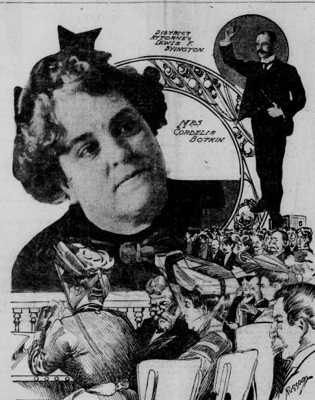
Cordelia Botkin was the estranged wife of a prominent businessman in San Francisco in the last decade of the 19th century. She (41 years old) met John Dunning (31) when his bicycle broke down in the park. Botkin made very obvious sexual advances, and consequently Dunning (who was married to a former congressman’s daughter) entered into a torrid affair with her. He eventually left his wife and fell into a life of gambling, sex and alcoholism – all fueled (and financed) by Botkin. He eventually decided to end the affair and return to his wife, a fact of which he informed Botkin. Not wanting to be left alone, she sent a box of poisoned candy to Dunning’s wife made to look like a gift from a friend. Dunning’s wife and five friends and family members ate the chocolate. Four recovered but the wife and her sister died. The remaining chocolates were tested and found to be laced with arsenic. The trail of the candy eventually led back to Botkin, who was convicted and sentenced to life imprisonment. In a strange twist to the tale, the judge who sent her to jail saw her out shopping in town a few weeks later; an investigation uncovered the fact that Botkin was exchanging sexual favors in order to be allowed to leave jail whenever she wanted. She died in jail at the age of 56. Her cause of death was: “softening of the brain due to melancholy.”

On May 23, 1918, an Italian grocer named Joseph Maggio and his wife were butchered, while sleeping in their apartment above the Maggio grocery store. Upon investigation, the police discovered that a panel in the rear door had been chiseled out, providing a way in for the killer. The murder weapon, an axe, was found in the apartment, still coated with the Maggio’s blood. Nothing in the house had been stolen, including jewelry and money that were almost in plain sight. The only clue that was discovered was a message that had been written in chalk near the victim’s home. It read: “Mrs. Joseph Maggio will sit up tonight. Just write Mrs. Toney”. Almost exactly a month after the Maggio murder came a second crime. Louis Bossumer, a grocer who lived behind his store with his common-law wife, Annie Harriet Lowe, was discovered by neighbors one morning, lying in a pool of blood. The Axeman murdered a total of eight people before the killings stopped. There was no evidence to link the only suspect, Joseph Mumfre, to the crimes. The crime was never solved.
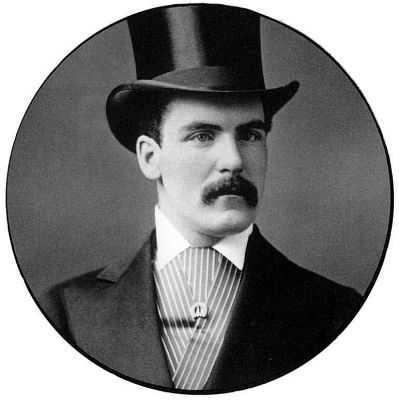
Cream was a doctor secretly specializing in abortions. He was born in Scotland, educated in London, active in Canada and later in Chicago, Illinois. In 1881, he was found to be responsible for fatally poisoning several of his patients of both sexes. Originally there was no suspicion of murder in these cases, but Cream himself demanded an examination of the bodies, apparently an attempt to draw attention to himself. Imprisoned in the Illinois State Penitentiary in Joliet, Illinois, he was released on 31 July, 1891, on good behavior. Moving to London, he resumed killing (mostly prostitutes) and was soon arrested. He was hanged on 15 November, 1892. According to the hangman, his last words were reported as being “I am Jack…”, interpreted to mean Jack the Ripper. He was allegedly imprisoned at the time of the Ripper murders, but some authors have suggested that he could have bribed officials and left the prison before his official release.
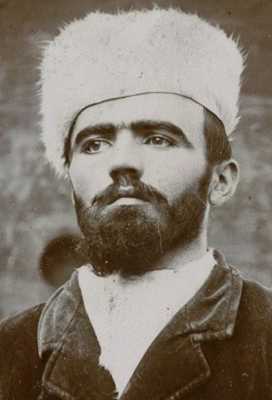
Joseph Vacher was a French serial killer, sometimes known as “The French Ripper” due to comparisons to the more famous Jack the Ripper murderer of London, England, in 1888. His scarred face, accordion and plain, white, hand-made rabbit-fur hat became his trademark appearance. During a three-year period, beginning in 1894, Vacher murdered and mutilated at least 11 people (one woman, five teenage girls and five teenage boys). Many of them were shepherds watching their flocks in isolated fields. The victims were stabbed repeatedly, often disemboweled, raped and sodomized. Vacher was a drifter, traveling from town to town, from Normandy to Provence, staying mainly in the southeast of France, and surviving by begging or working on farms as a day laborer. He was caught in 1897, whilst trying to murder a woman in the fields. He confessed to the murders, but claimed he was insane because he was bitten by a rabid dog when he was a child. He later changed his story and said he was a messenger of God. Vacher was executed by guillotine two months later, at dawn on December 31, 1898. He refused to walk towards the scaffold and had to be dragged by the executioners. If you are so inclined, you can view Vacher’s post-execution head here.

This entry is on the list not for the number of victims but what Cianciulli did with the bodies. Leonarda Cianciulli (November 14, 1893, Montella, Province of Avellino – October 15, 1970) was an Italian serial killer. Better known as the “Soap-Maker of Correggio”, she murdered three women in Correggio between 1939 and 1940, and turned their bodies into soap. Having been born the child of a rape, she led a sad childhood with a hateful mother. She attempted suicide twice. In 1914, she married a registry office clerk, Raffaele Pansardi, and moved to Lariano in Alta Irpinia. Their home was destroyed by an earthquake in 1930, and they moved once more, this time to Correggio, where Leonarda opened a small shop and became very popular as a nice, gentle woman, a doting mother and a nice neighbor. In 1939, Cianciulli heard that her eldest son, Giuseppe, was to join the Italian army in preparation for World War II. Giuseppe was her favorite child, and she was determined to protect him at all costs. She came to the conclusion that his safety required human sacrifices. She found her victims in three middle-aged women, all neighbors. After murdering her first victim with an axe she got rid of the body in this way (her own words):
“I threw the pieces into a pot, added seven kilos of caustic soda, which I had bought to make soap, and stirred the whole mixture until the pieces dissolved in a thick, dark mush that I poured into several buckets and emptied in a nearby septic tank. As for the blood in the basin, I waited until it had coagulated, dried it in the oven, ground it and mixed it with flour, sugar, chocolate, milk and eggs, as well as a bit of margarine, kneading all the ingredients together. I made lots of crunchy tea cakes and served them to the ladies who came to visit, though Giuseppe and I also ate them.”
Cianciulli’s second victim was killed in exactly the same manner. Her final victim, opera singer Virginia Cacioppo was killed in the same way but with one twist:
“She ended up in the pot, like the other two…her flesh was fat and white, when it had melted I added a bottle of cologne, and after a long time on the boil I was able to make some most acceptable creamy soap. I gave bars to neighbors and acquaintances. The cakes, too, were better: that woman was really sweet.”
Cianciulli was caught due to an eyewitness and found guilty of murder. She was sentenced to thirty years in jail where she died of a brain hemorrhage. More information (including an image of the tools she used) can be found here.
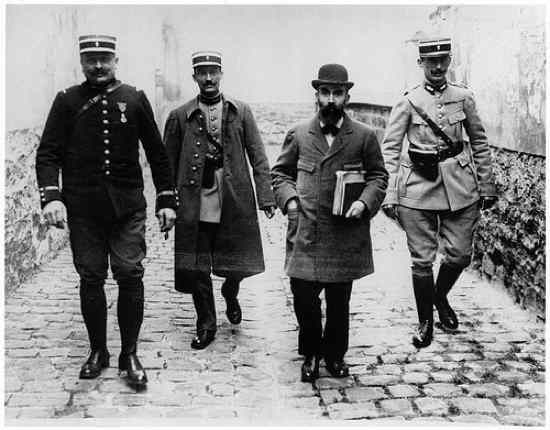
Landru was a French serial killer, and real-life “Bluebeard”. Born in Paris, he left school and joined the French army. When he was discharged he had a child with his cousin and then married another woman, having four children by her, prior to leaving her. He was swindled out of money by his employer and turned to fraud himself, for an income. Landru began to put advertisements in the lonely hearts sections in Paris newspapers, usually along the lines of “Widower with two children, aged 43, with comfortable income, serious and moving in good society, desires to meet widow with a view to matrimony.” With World War I underway, many men were being killed in the trenches, leaving plenty of widows upon whom Landru could prey. When women would come to his home Landru would kill them, disembowel them and burn their body parts in his oven. His aliases were so numerous that he had to keep a ledger listing all the women with whom he corresponded, and which particular identity he used for each woman. He was eventually caught, thanks to the efforts of the sister of one of his victims, and was found guilty on the evidence of his ledger books, alone (no body parts were recovered). He was guillotined 3 months later, in 1922. During his trial Landru traced a picture of his kitchen, including in it the stove in which he was accused of burning his victims. He gave this drawing to one of his lawyers. In December 1967, the drawing was made public, written in pencil on the back Landru had written “It is not the wall behind which a thing takes place, but indeed the stove in which a thing has been burned”. This has been interpreted as Landru’s confession to his crimes
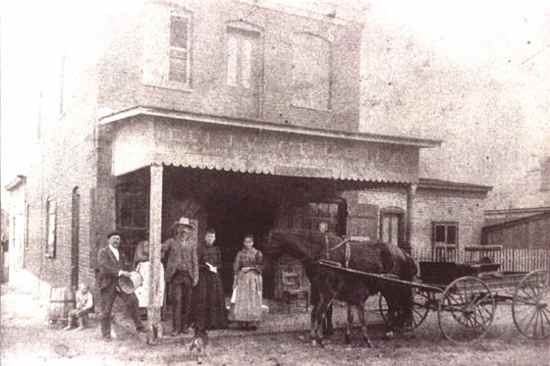
The Servant Girl Annihilator, or Austin Axe Murderer, was a serial killer or killers who terrorized Austin, Texas, between 1884 and 1885. It is thought that at least seven women, mostly servant girls, died at the hands of the killer, who typically dragged his victims from their beds and raped them before slashing or axing them to death. Several victims were stabbed by some sort of spike in the ears or the face. His first victim was Mollie Smith, on New Year’s Eve, 1884. Many people were arrested for the crimes, but none were convicted. The last killings were a year after the first, ending with the murder of two wealthy white women, Eula Phillips and Sue Hancock, in central Austin, on December 24, 1885. The crimes represented an early example of a serial killer in the United States, three years before the Jack the Ripper murders in London. Some have even attempted to prove that the Annihilator and Jack the Ripper were one and the same. You can read more about this killing spree here.

Micajah “Big” Harpe (1768? – August 1799) and Wiley “Little” Harpe (c1770? – January 1804) were outlaws who operated in Tennessee, Kentucky and Illinois, in the late 18th century. Their crimes appear to have been motivated more by blood lust than financial gain, and some historians have called them the nation’s first true “serial killers”. As young men, the Harpes lived with renegade Creek and Cherokee Indians, who committed atrocities against both white settlers and against their own tribes. By 1797, the Harpes were living near Knoxville, Tennessee. However, they were driven from the town after being charged with stealing hogs and horses. They were also accused of murdering a man named Johnson, whose body was found in a river, ripped open and weighted with stones. This became a characteristic of the Harpe’s murders. They butchered anyone under the slightest provocation, even babies. R.E. Banta, in The Ohio, claims that Micajah Harpe even bashed his infant daughter’s head against a tree because her constant crying annoyed him. This was the only crime he would later confess genuine remorse for. In July, 1799, John Leiper raised a posse to avenge the murder of one of their victims (Mrs. Segal). Leiper reached Harpe first, and managed to shoot him. He decapitated Harpe and stuck his head on a pole, at the location still known as “Harpe’s Head” in Kentucky. Little Harpe escaped but was eventually caught and executed, by hanging. Wyatt Earpe is a descendent of the Harpes (most of whom changed their name to avoid being scorned by their communities).
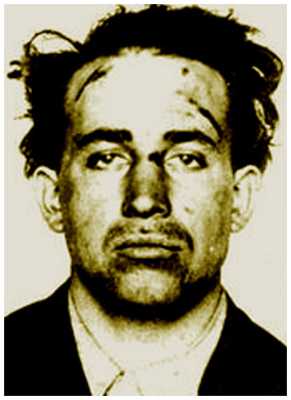
Earle Leonard Nelson, aka The Gorilla Killer (May 12, 1897 – January 13, 1928), was an American serial killer. Around the age of 10, Nelson collided with a streetcar while riding his bicycle and remained unconscious for six days, following the accident. After he awoke, his behavior became erratic and he suffered from frequent headaches and memory loss. He began his criminal behavior early, and he was sentenced to two years in San Quentin State Prison, in 1915, after breaking into a cabin he believed to be abandoned. He later spent time in mental institutions. Nelson began engaging in sex crimes when he was 21 years old. In 1921, he attempted to molest a 12-year-old girl named Mary Summers, but he was thwarted when she screamed and brought attention to him. He was committed to a mental hospital again, but when he was released in 1925, he began his killing spree. Nelson’s victims were mostly landladies, whom he would approach on the premise of renting a room. Once he gained their trust, he would kill them, almost always by strangling them, and engage in necrophilia with their corpse. He would often hide the body, leaving the corpse under the nearest bed for days. Nelson’s ‘modus operandi’ led him to be labeled “The Gorilla Strangler”. He went on to murder more than 20 people and was finally caught and hanged, in 1928.
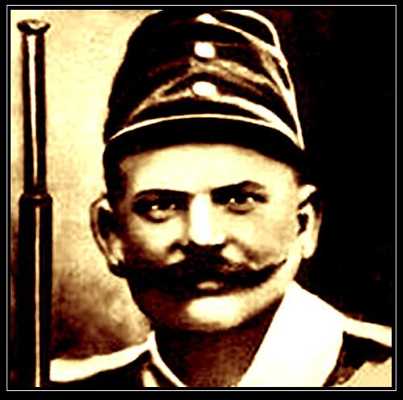
Béla Kiss (born in 1877) was an Hungarian serial killer. He is thought to have murdered at least 24 young women, and attempted to pickle them in giant metal drums that he kept on his property. He was a tinsmith who had lived in Cinkota (a town near Budapest), since 1900. He was an amateur astrologer and was fond of occult practices. Members of the community noticed that he was amassing a number of large metal drums, which he said were filled with gasoline to prepare for rationing in the First World War, which was looming. He was conscripted into the army and left the town. In July 1916, Budapest police received a call from a Cinkota landlord who had found seven large metal drums. The town constable had remembered Kiss’ stockpile of gasoline, and led needy soldiers to them. Upon attempting to open the drums, a suspicious odor was noted. Detective Chief Charles Nagy took over the investigation and opened one of the drums. There they discovered the body of a strangled woman. The other drums yielded similarly gruesome content. A search of Kiss’ house resulted in a total of 24 bodies. Kiss’ housekeeper assured police that she knew absolutely nothing about the murders, and showed them a secret room Kiss had told her never to enter. The room was filled with bookcases, but also had a desk that held a number of letters, Kiss’ correspondence with 74 women and a photo album. Many of the books were about poisons or strangulation. Kiss was found recuperating in a hospital in Serbia, but he escaped by putting a dead soldier’s body in his bed. He was never caught, but people claimed to have seen him in various places around the world, including leaving a New York subway.
Portions of this text is available under the Creative Commons Attribution-ShareAlike License; additional terms may apply. Some text is derived from or courtesy of Wikipedia.








